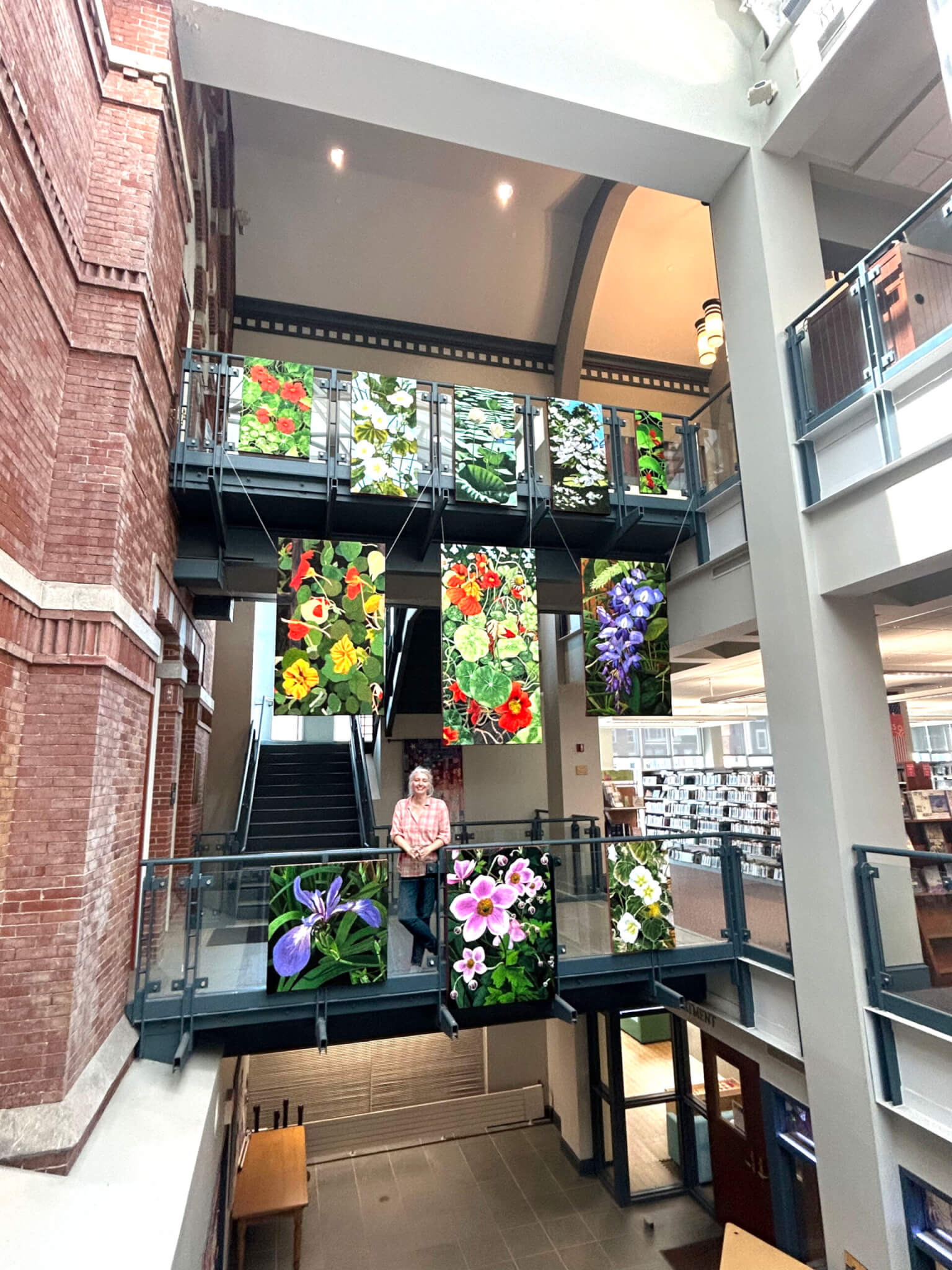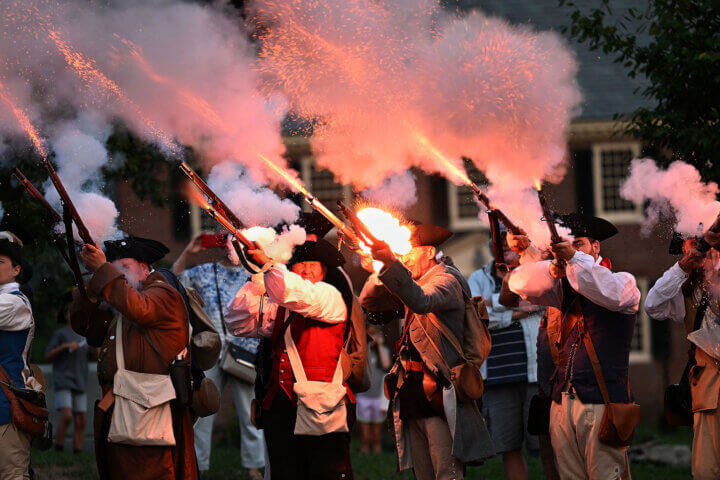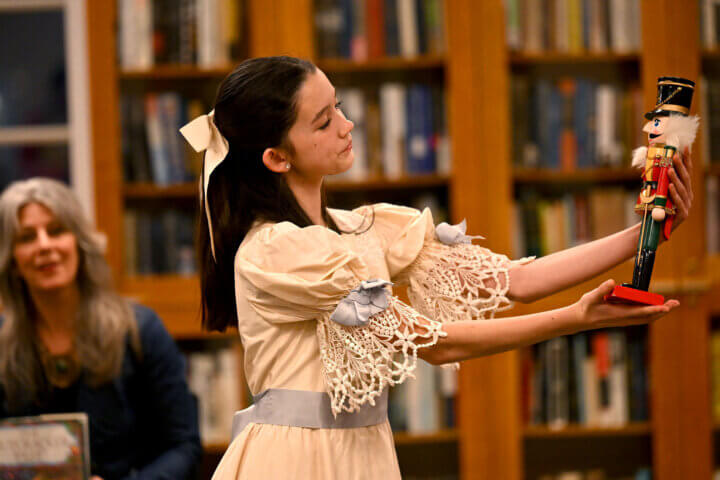By Ruth Ford — Correspondent
Maggie Stanley was in elementary school when she realized she wanted to be an artist.
Visiting a friend’s house in Sudbury, she noticed that the mother, the artist Marcia Smith, was doodling in the margins of the phone book.
“It was the late ’70s, early ’80s, and she had a soap opera on, and she was sketching the people on TV,” Stanley says. “She did it so fast, and she got the gestures down. I was so fascinated by it.
“This was [when] I saw: It’s not a formal thing,” Stanley says. “You doodle whenever you have a pencil, whenever you have paper.”
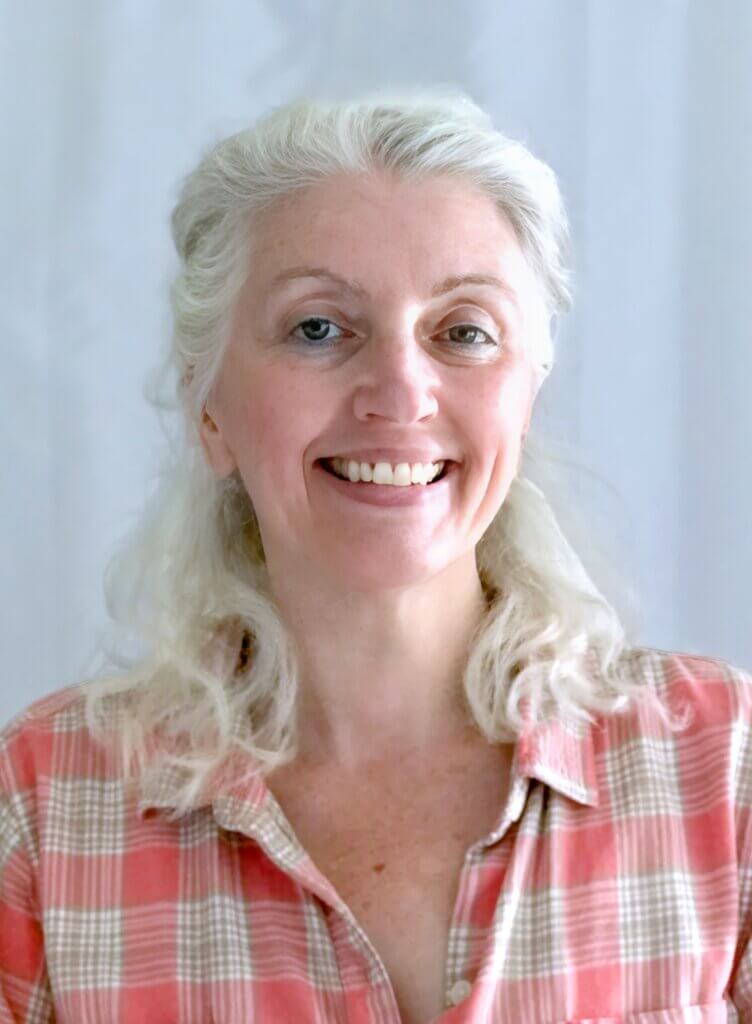
It was a lesson Stanley took to heart, doodling and drawing through elementary school and middle school, when her family moved to Concord. Her parents encouraged her with painting lessons, first with Smith and then at the deCordova Sculpture Park and Museum.
In high school, Stanley switched to ceramics, but she kept drawing. At Cornell, she began tracing the fine lines of pulp.
In her notebooks: It was pareidolia — the tendency to impose meaning or order in chaos, like seeing the Man in the Moon or finding a face in a cloud formation.
“For years, this was my main kind of art,” says Stanley.
The ‘gesture’ of flowers
After graduating in 1995, Stanley traveled around the country, working IT and administrative jobs and branching out in her art: sewing bags from tapestry remnants, embossing silk scarves with designs created with rubber stamps. And painting, always painting.
“My parents, my mom especially, made sure we went to museums a lot,” says Stanley, who credits the inspiration for her 5- and 6-foot-tall floral canvases hanging now in the atrium at the Morse Institute Library to the window boxes at the Isabella Stewart Gardner Museum.
“The nasturtiums in the top window boxes trail down and hang past the windows on the lower floor. They are always red-orange, and the color is just beautiful,” she says.
Her reverence for the geometry and “gesture” of flowers has been fed by the “tons of time” she has spent at the Gardner Museum and the Museum of Fine Arts in Boston, drawn especially to the art nouveau posters of the Czech artist Alphonse Mucha, and the designs of Louis Comfort TiffanyFlowers and plants have incredible structures, Stanley explains. “People don’t study them. They think of them as random, but that’s geometry. That’s science — structure branching out, seeking sunlight, balancing weight.”
Local inspiration
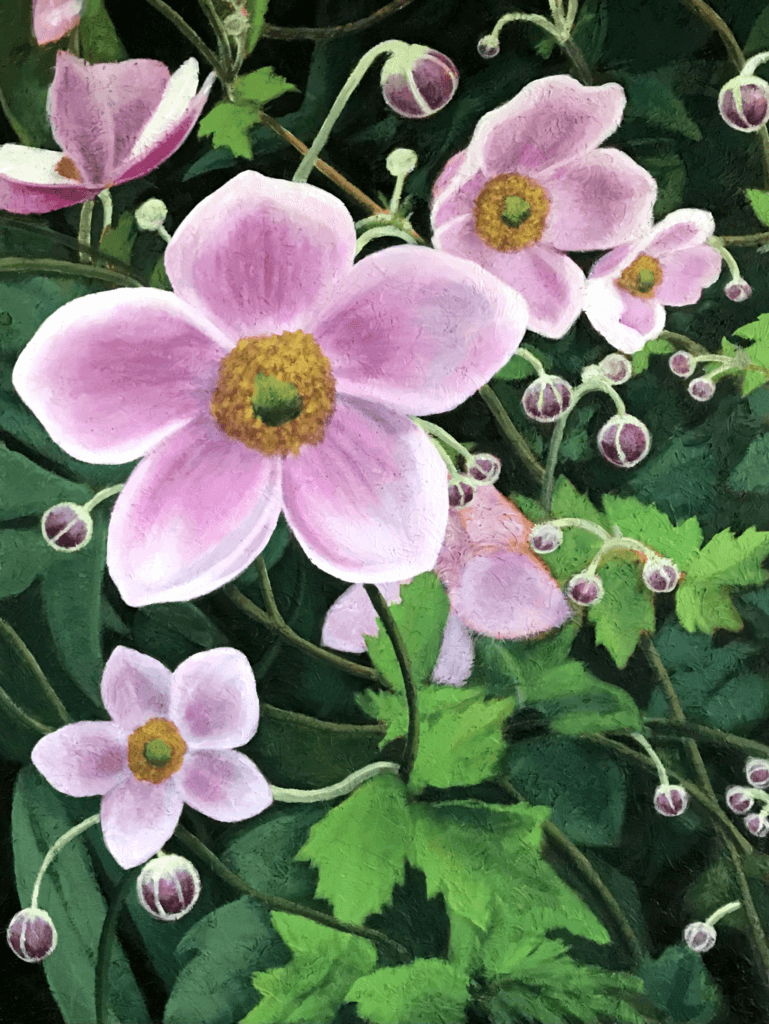
In 2018, Stanley moved back to Concord, and when the pandemic came, she spent a lot of time outdoors taking photographs. After she began taking an oil painting class with Lois Andersen at the Umbrella Arts Center, she switched her focus almost exclusively to flowers.
“I was walking from community garden after community garden just to look for nasturtiums, water lilies, woodlands, and gardens,” she says.
Along with the Great Meadow Preserve, a Concord house on the corner of Main and Stow has proved fertile for Stanley’s art. She has repeatedly gone to photograph the riot of wisteria bushes in the garden.
A small flower canvas inspired by Stanley’s oil painting class caught the eye last February of Jane Ellen Newman, community relations coordinator for Morse Institute Library in Natick, who invited Stanley to hold an exhibition.
‘You can get lost in it’
Stanley says it was exhilarating and overwhelming, not only because it would be her first solo show, but also because of the size of the canvases, some 5 or 6 feet tall. “When you are working that close and large, you can get lost in it,” she says.
After uploading a dozen of her favorite flower photos to her iPad, Stanley used the Procreate app to manipulate the image, add a transparent layer to trace the drawing, and then project the image onto a canvas. To give the acrylic paintings the depth of an oil, she uses light molding clay.
“It’s sort of like Cool Whip. You spread it on, and it gives this texture,” while getting rid of the plastic-y look of the acrylic, she says.
At the Morse Institute, the canvases — all close-ups of nasturtiums, wisteria, lilies, and daisies — emphasize the geometrical structure within the plants themselves.
“When I was in the oil painting class, that’s what I kept being drawn to.” Stanley says. “That mix of the organic and the architectural.
“That’s why I called the exhibit “Flora(l) Portal. You feel as if you can almost walk into the paintings.”
Flora(l) Portal runs through November 2 at the Morse Institute Library, 14 East Central Street, Natick. An artist reception will be held from 2 to 4 p.m. on October 6.


